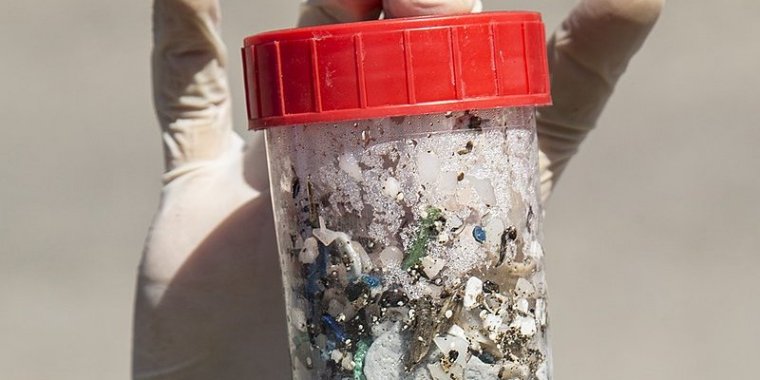| News / Science News |
Researchers Discover Microplastics in 100 Percent of People Studied
In the first study of its kind, Austrian researchers have tracked the movement of microplastics into human beings. The results show that the plastic that is a ubiquitous element of human life is now also a constant element in the human body.

Beach sampling Microplastics. I![]()
The research was presented at this week at UEG Week in Vienna, Austria, the largest gastroenterology meeting in Europe.
Two Austrian researchers, Dr. Philipp Schwabl from the Medical University of Vienna, and Dr. Bettina Liebmann, from the Environment Agency Austria, studied participants from countries including Finland, Italy, Japan, the Netherlands, Poland, Russia, the UK and Austria.
Microplastics are particles of plastic less than 5 mm in size. They are often tiny plastic beads that are put in cosmetic products. A few nations, including the U.S., the UK and South Korea, have banned microbeads.
But microplastics also are created when larger pieces of plastic break down over time, and plastic in general is everywhere. The U.N. estimates that about 8 million metric tons of plastic end up in the world’s oceans every year. And the World Economic Forum estimated that Americans threw away over 33 million metric tons of plastic in 2014.
But this study, which was small, suggests that plastic, whether it's bad for us or not, is already in all of us.
Study participants were asked to keep a food diary for seven days prior to taking part in the test. Then they turned over stool samples to the researchers who then looked for microplastics.
And they found them. Every single stool sample tested positive for the presence of microplastic, and up to nine different plastic types were identified.
Where is the plastic coming from? In the cases of this study, the plastic that showed up in people is associated with eating plastic wrapped foods, and drinking from plastic bottles. But most of the participants also ate fish, so Schwabl says that right now, "no exact conclusion on plastic origin can be made" on exactly where the plastic is coming from. Future studies should narrow that down.
So is all that plastic making us sick? Schwabl says, for now, there are no definitive studies that suggest a danger to humans. But he says that in "animal studies, it has been shown that microplastics may cause intestinal damage, remodeling of the intestinal villi, distortion of iron absorption and hepatic stress."
And the concern is "what this means to us, and especially patients with gastrointestinal diseases," Schwabl says. "While the highest plastic concentrations in animal studies have been found in the gut, the smallest microplastic particles are capable of entering the blood stream, lymphatic system and may even reach the liver."
He was surprised, he says, to find that plastic is apparently showing up in all of us, and he expects the amount collecting in our bodies to keep increasing, unless the world drastically changes its use of plastic. (VOA)
YOU MAY ALSO LIKE



